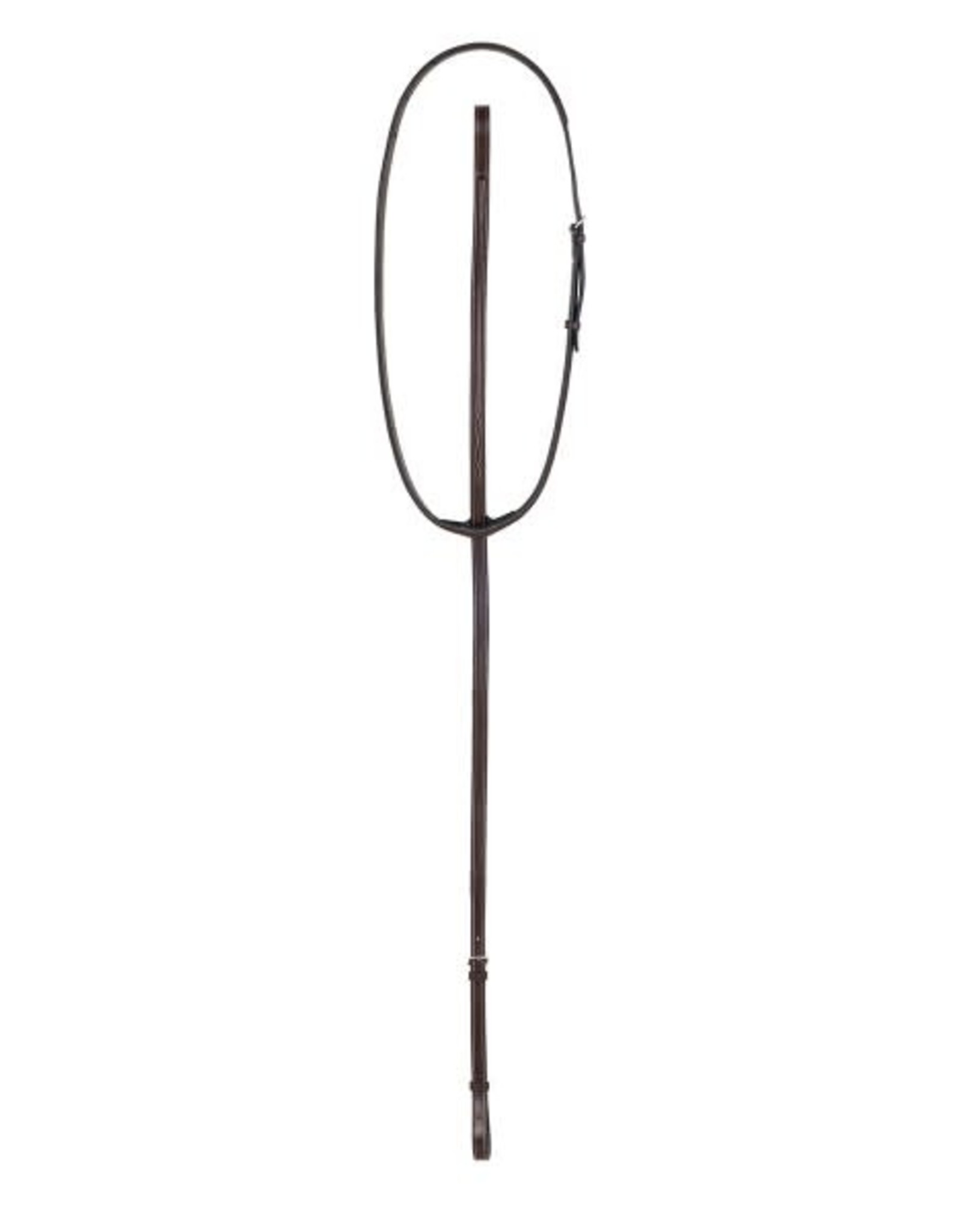
For equestrians and horse enthusiasts, the proper use of equipment such as martingales is crucial to ensure the safety and well-being of both the rider and the horse. When it comes to martingales, two common types are the standing martingale and the running martingale. These devices serve distinct purposes and are used in specific riding disciplines. In this blog, we will explore the differences between standing martingales and running martingales, and discuss their respective applications.
Standing Martingale: The standing martingale is a piece of equipment attached to the horse’s girth, and goes up to the noseband. There is a piece that goes around the horses neck as well. There is a martingale stop that holds the neck piece and the piece that goes from the girth to the noseband in place.
Purpose and Function: The primary purpose of a standing martingale is to control and limit the horse’s head carriage. It is commonly used in disciplines such as show jumping and eventing, where riders require additional control and stability while jumping fences. By preventing the horse from raising its head too high, the standing martingale helps maintain balance and prevents the horse from flipping its head back and potentially impacting the rider’s safety.
Usage and Adjustments: When using a standing martingale, it is important to ensure proper fit and adjustment. The martingale should be attached to the girth and adjusted so that when the horse’s head is in a neutral position, you should be able to touch the horses jaw with the strap when fitting. This ensures that the martingale only comes into effect when the horse raises its head excessively, allowing for natural movement at regular head positions.
Running Martingale: Unlike the standing martingale. It consists of a strap going from the girth that connects to the martingale attachment which has rings at the end for the reins to pass through. It also has a neck strap that buckles around the neck. This martingale should be used with rein stops to keep the rings from moving too far on the reins.
Purpose and Function: The running martingale is primarily used to encourage the horse to maintain a consistent and steady contact with the bit. It acts as a tool for riders to establish communication and encourage proper headset and self-carriage. The running martingale allows the horse to move its head freely within a controlled range while discouraging the horse from raising its head too high. This is done by creating pressure on the bit.
Usage and Adjustments: To use a running martingale effectively, it is important to adjust it properly. The martingale should be attached to the girth and adjusted so that when the horse’s head is in a neutral position, there is no tension on the reins or the martingale..
Choosing the Right Martingale: The decision to use a standing martingale or a running martingale depends on several factors, including the rider’s discipline, the horse’s training, and the specific needs of the horse and rider combination. It is essential to consult with an experienced trainer or instructor to determine which martingale is suitable for your horse’s needs and your riding goals.
Conclusion: Both standing martingales and running martingales are tools that can help riders maintain control, and safety, and have proper communication with their horses. The standing martingale restricts excessive head movement, while the running martingale encourages a consistent contact with the bit. Understanding the differences and knowing how to use and adjust these martingales correctly are crucial for their safe and effective application. Remember, martingales should only be used with proper guidance and supervision to ensure the wellbeing and comfort of both the horse and rider, and their usage should always be accompanied by proper training and guidance from a qualified equestrian professional.



Recent Comments